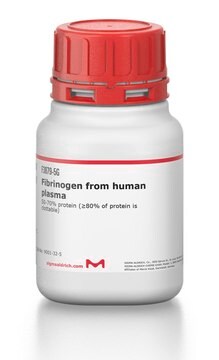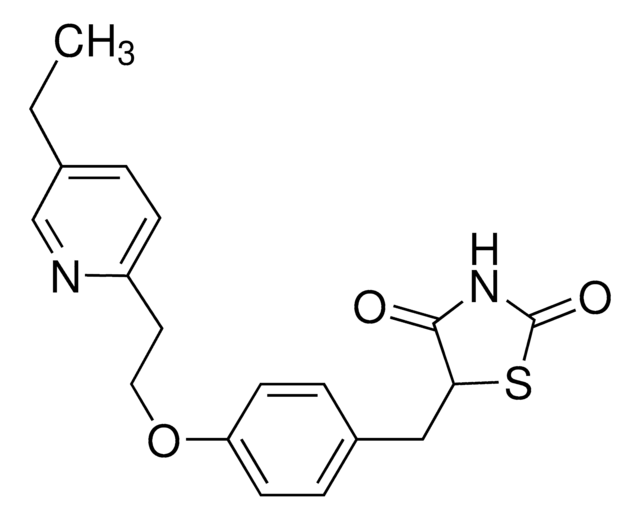G117
Glipizide
solid
Sinónimos:
1-Cyclohexyl-3-{4-[2-(5-methylpyrazine-2-carboxamido)ethyl]phenylsulfonyl}urea
About This Item
Productos recomendados
formulario
solid
color
white
solubilidad
methanol: 1.9 mg/mL
DMSO: 48 mg/mL
cadena SMILES
Cc1cnc(cn1)C(=O)NCCc2ccc(cc2)S(=O)(=O)NC(=O)NC3CCCCC3
InChI
1S/C21H27N5O4S/c1-15-13-24-19(14-23-15)20(27)22-12-11-16-7-9-18(10-8-16)31(29,30)26-21(28)25-17-5-3-2-4-6-17/h7-10,13-14,17H,2-6,11-12H2,1H3,(H,22,27)(H2,25,26,28)
Clave InChI
ZJJXGWJIGJFDTL-UHFFFAOYSA-N
Información sobre el gen
human ... ABCC8(6833) , KCNJ1(3758) , KCNJ11(3767)
¿Está buscando productos similares? Visita Guía de comparación de productos
Descripción general
Aplicación
- chick embryo yolk sac membrane (YSM) and chorioallantoic membrane (CAM) assay
- MCF-7 breast cancer assay on chorioallantoic membrane (CAM)
- metastasis assays
- rat aortic ring assay
- in vivo matrigel plug assay
- 3-(4,5-dimethylthiazol-2-yl)-2,5-diphenyl tetrazolium bromide (MTT) assay
- flow cytometry
- western blotting
Acciones bioquímicas o fisiológicas
Código de clase de almacenamiento
11 - Combustible Solids
Clase de riesgo para el agua (WGK)
WGK 3
Punto de inflamabilidad (°F)
Not applicable
Punto de inflamabilidad (°C)
Not applicable
Equipo de protección personal
Eyeshields, Gloves, type N95 (US)
Certificados de análisis (COA)
Busque Certificados de análisis (COA) introduciendo el número de lote del producto. Los números de lote se encuentran en la etiqueta del producto después de las palabras «Lot» o «Batch»
¿Ya tiene este producto?
Encuentre la documentación para los productos que ha comprado recientemente en la Biblioteca de documentos.
Los clientes también vieron
Artículos
Glucose metabolism is regulated by the opposing actions of insulin and glucagon. Insulin is released from pancreatic ß cells in response to high blood glucose levels and regulates glucose metabolism through its actions on muscle, liver, and adipose tissue.
Nuestro equipo de científicos tiene experiencia en todas las áreas de investigación: Ciencias de la vida, Ciencia de los materiales, Síntesis química, Cromatografía, Analítica y muchas otras.
Póngase en contacto con el Servicio técnico












